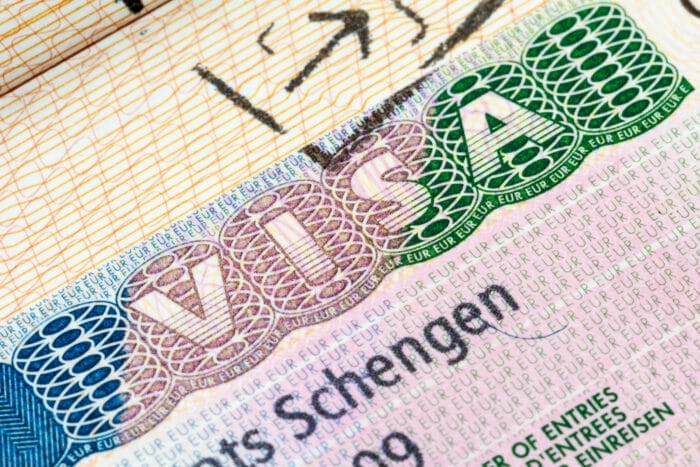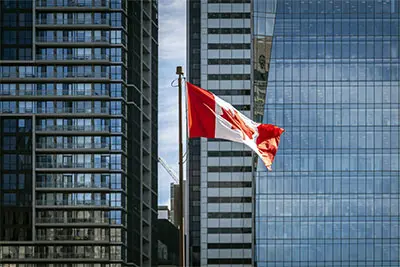
An extensive and thorough understanding of the Schengen visa fees is crucial for anyone planning to travel to the Schengen Area. While the core Schengen visa fee is standardized across all 29 member countries, the total Schengen visa cost can vary significantly. This variation is primarily due to additional charges and fluctuating exchange rates, which can make the process of obtaining a Schengen visa to some countries more expensive than others. This detailed guide will provide a comprehensive Schengen visa fees breakup, explaining the different components that contribute to the final Schengen visa cost and highlighting why some countries might seem to cost more.
🌍 Understanding the Core Schengen Visa Fee
The foundation of any Schengen visa application fee is the fixed amount set by the European Commission. This fee is non-negotiable and applies uniformly to all applicants, regardless of the Schengen country they are applying to. This standardized approach ensures that the basic administrative cost of processing a visa application is consistent across the entire region. The recent increase in the Schengen visa fee from €80 to €90 for adults has been a notable change that affects all applicants.
Adults (12 years and older): The standard Schengen visa fee is currently €90. This is the fundamental charge for the visa itself.
Children (aged 6 to 12): A reduced Schengen visa fee of €45 applies to children in this age group.
Children (under 6 years): These applicants are completely exempt from the Schengen visa fee and do not have to pay the core fee.
This tiered pricing structure is designed to make travel more accessible for families while still covering the administrative costs associated with processing the large volume of visa applications. The Schengen visa fee is a non-refundable payment, which means that even if your application is rejected or withdrawn, you will not get your money back. This is an important detail for every prospective applicant to remember. This standard visa cost is a core part of the Schengen visa fees breakup for every traveler.
The recent fee changes, such as the one implemented in mid-2024, are a result of periodic assessments by the European Commission. These adjustments are typically based on factors like the Euro area's inflation rate and the average salary of civil servants in EU countries. The goal is to ensure that the revenue generated from the Schengen visa fee is sufficient to cover the operational costs of the visa application system and improve processing efficiency.
💸 The Role of External Service Providers
One of the most significant factors in the total Schengen visa cost is the involvement of external service providers like VFS Global and TLScontact. These companies are authorized by Schengen embassies and consulates to manage the administrative and logistical aspects of the visa application process. Since most embassies no longer accept direct walk-in applications, paying the service fee to these providers is often mandatory for applicants. This is a primary reason why the Schengen visa fees breakup can show significant differences between countries.
The service fee charged by these providers is a key variable. Unlike the standardized Schengen visa fee, the service fee can vary from one country to another, and even from one embassy to another within the same country, based on contractual agreements. This is why you might find that the Schengen visa cost for a trip to Portugal is higher than for a trip to Germany, even though the base visa fee is the same.
Let's look at a practical example for an applicant in India, where VFS Global handles a large number of applications.
Germany: The total Schengen visa cost might include the €90 visa fee plus a VFS service charge of around ₹1,933.
France: The same €90 visa fee is applied, but the VFS service charge might be closer to ₹2,234.
Switzerland: The Schengen visa fee remains €90, but the service charge could be ₹2,690.
Portugal: The Schengen visa cost for Portugal might be the highest, with a service charge of around ₹3,111.
These variations in the service fee are a direct result of the different contractual obligations and operating costs of the external service providers in specific locations. This shows that the Schengen visa fees breakup is not as simple as just the base visa fee; the service charge is a crucial and mandatory component that must be factored in.
💰 Additional Costs That Increase the Total Schengen Visa Cost
The core Schengen visa fee and the mandatory service fee are just part of the financial puzzle. There are several other expenses that can significantly increase the total Schengen visa cost. These are often referred to as optional or supplementary costs, but many are necessary to complete the application process successfully.
1. Mandatory Travel Insurance
All Schengen visa applicants are required to have travel medical insurance that meets specific criteria. This insurance must:
Have a minimum coverage of €30,000.
Be valid across all Schengen countries.
Cover emergency medical expenses and repatriation in case of death.
The cost of this insurance can vary widely based on the applicant's age, duration of stay, and the insurance provider. A basic policy for a short trip might cost between €30 and €100, but this is an unavoidable part of the Schengen visa fees breakup. The insurance is a critical element, and without it, your application will be rejected. This is why it's a mandatory cost, even though it's not paid to the embassy or visa center directly.
2. Optional but Highly Recommended Services
External service providers offer a range of additional services to make the application process more convenient. While these are not mandatory, many applicants choose to use them, thereby increasing their total Schengen visa cost.
Courier Service: Paying for a courier service to have your passport and documents returned to you after processing can save you a trip to the visa center. The cost can be anywhere from ₹500 to ₹1,000 or more, depending on the location and provider.
SMS Updates: For a small fee, you can receive text message updates on the status of your application.
Premium Lounge Service: Some centers offer a premium lounge for a more comfortable and expedited application experience. This can add a significant amount to the Schengen visa cost, often running into several thousand rupees.
These optional services are a great example of why some countries might seem to have a higher total Schengen visa cost. The more choices an applicant has and the more of these services they use, the higher the final bill will be.
3. Documentation-Related Costs
Preparing the necessary documents for a Schengen visa application can also come with a price tag.
Passport photos: You need to provide recent, ICAO-compliant passport-sized photos.
Document translations: If your supporting documents are not in a language accepted by the embassy, you will need to get them translated by a certified translator.
Bank statement certification: Some banks charge a fee to certify or provide official bank statements.
Flight and hotel bookings: While many visa centers accept temporary reservations, some may require proof of full payment, adding a financial commitment before the visa is approved.
These seemingly minor costs, when added together, contribute to the overall Schengen visa fees breakup, making the journey to Europe a significant financial undertaking.
📊 Schengen Visa Cost Variations Explained: A Detailed Table
To better illustrate the differences in Schengen visa cost, let's analyze the Schengen visa fees breakup for a few countries, keeping in mind the standard €90 visa fee for adults. The following table provides a snapshot of the potential total cost for an applicant from a country like India.
| Schengen Country | Base Visa Fee (€) | VFS Service Charge (₹) | Estimated Total Cost (₹) | Key Factors |
|---|---|---|---|---|
| Germany | €90 | ₹1,933 | ~ ₹9,100 + ₹1,933 = ₹11,033 | Lower service charge, straightforward process. |
| France | €90 | ₹2,234 | ~ ₹9,100 + ₹2,234 = ₹11,334 | Standard service charge, popular destination. |
| Austria | €90 | ₹2,274 | ~ ₹9,100 + ₹2,274 = ₹11,374 | Similar to France, a popular choice for tourists. |
| Switzerland | €90 | ₹2,690 | ~ ₹9,100 + ₹2,690 = ₹11,790 | Higher service charge due to different contractual agreements. |
| Belgium | €90 | ₹2,475 | ~ ₹9,100 + ₹2,475 = ₹11,575 | The fee for Belgium is specific to the country's arrangement with VFS. |
| Portugal | €90 | ₹3,111 | ~ ₹9,100 + ₹3,111 = ₹12,211 | One of the highest service charges, making the overall cost higher. |
Note: The rupee values are approximate and are subject to change based on the daily Euro-to-Rupee exchange rate. The €90 visa fee is a standard figure, but the converted amount in local currency will fluctuate.
This table makes it clear that while the Schengen visa fee is constant, the total Schengen visa cost is not. The variations in the service fee are the primary drivers of this difference. These service fees are a critical part of the Schengen visa fees breakup, and they are the main reason why applicants often find that some countries cost more than others.
📉 Are There Any Exemptions or Reduced Fees?
While the Schengen visa fee is generally applicable, there are specific categories of applicants who are either exempt from the fee or are eligible for a reduced rate. This is an important part of the Schengen visa fees breakup that many people are not aware of.
Full Fee Exemptions
Certain groups of travelers are completely exempt from paying the Schengen visa fee.
Children under the age of six.
School pupils, students, post-graduate students, and accompanying teachers who are traveling for study or educational training.
Researchers from third countries traveling for the purpose of carrying out scientific research.
Representatives of non-profit organizations under 25 years of age who are attending seminars, conferences, or cultural/sports events organized by non-profit organizations.
Family members of EU/EEA citizens who are exercising their right to free movement. This includes spouses, children under 21, and dependent parents.
It is important to note that even if an applicant is exempt from the Schengen visa fee, they may still be required to pay the mandatory service fee to the external service provider like VFS Global. This is a common point of confusion for applicants. The exemption applies only to the core visa fee, not to the administrative costs of the visa center.
Reduced Fee Categories
Some applicants may qualify for a reduced Schengen visa fee.
Children aged 6 to 12 years pay a reduced fee of €45.
Nationals of countries with a visa facilitation agreement with the European Union, such as Armenia, Azerbaijan, and Belarus, often pay a lower fee of €35.
These exemptions and reduced fees are designed to promote educational, scientific, and cultural exchange, as well as to facilitate travel for those with close ties to the EU. The Schengen visa fees breakup is therefore not just a one-size-fits-all model.
⚠️ Final Thoughts on the Schengen Visa Cost
The journey to obtaining a Schengen visa is a multi-step process with a clear financial component. The Schengen visa fees breakup shows that the Schengen visa cost is far more than just the base visa fee. The standardized €90 visa fee is a consistent element, but the mandatory service fee from external providers and the costs of other necessary items like travel insurance can make the total Schengen visa cost significantly different depending on the country and the applicant's specific needs.
For instance, the Schengen visa cost for a traveler to Italy will be the €90 visa fee plus a service charge and the cost of travel insurance. A traveler to the Netherlands will pay the same base fee, but the service charge might be different, leading to a different total cost. This is the simple yet crucial reason why some countries cost more than others. The Schengen visa fees are subject to change, and it's essential for applicants to check the most recent fee structure on the official websites of the embassy or the external service provider before starting their application.
The key takeaways are:
The Schengen visa fee is standardized at €90 for adults, but the total Schengen visa cost is not.
The mandatory service fee charged by external visa centers like VFS Global and TLScontact varies by country and is the main reason for the difference in cost.
Additional expenses like travel insurance and document-related costs add to the overall Schengen visa fees breakup.
Certain categories of applicants, such as children under six and family members of EU citizens, are exempt from the Schengen visa fee, but may still need to pay the service fee.
By understanding this detailed Schengen visa fees breakup, travelers can better budget for their European trip and avoid any unexpected financial surprises.
;More Travel News
-
 19-Mar-2023Cholistan Jeep Rally Schedule and Date
19-Mar-2023Cholistan Jeep Rally Schedule and Date -
 18-Jun-2019How Dubai can offer the best prices when compared with the world
18-Jun-2019How Dubai can offer the best prices when compared with the world -
 02-Apr-2019How to Safely Travel in Pakistan
02-Apr-2019How to Safely Travel in Pakistan -
23-Sep-2024Now Foreigners Get FREE Visas to Pakistan. New Policy Aims to Attract Tourism
-
 05-Feb-2022Historical Chart of Hajj Package by Government of Pakistan
05-Feb-2022Historical Chart of Hajj Package by Government of Pakistan -
 05-Jul-2023Embrace the Serenity of Sun Tourism - Exploring Warm and Sunny Mountain Areas
05-Jul-2023Embrace the Serenity of Sun Tourism - Exploring Warm and Sunny Mountain Areas -
 13-Mar-2023Riyadh Air going to be the new Saudi flag carrier airline. Tells Muhammad bin Salman
13-Mar-2023Riyadh Air going to be the new Saudi flag carrier airline. Tells Muhammad bin Salman -
 18-May-2025Ensure Better Chances of Canada Visa by Avoiding These Mistakes
18-May-2025Ensure Better Chances of Canada Visa by Avoiding These Mistakes -
 13-Oct-2021Best International Honeymoon Tour Packages for Couples from Pakistan 2021
13-Oct-2021Best International Honeymoon Tour Packages for Couples from Pakistan 2021 -
 02-Aug-2021Thousands of Animal Human Bones in Saudi Arabia Cave
02-Aug-2021Thousands of Animal Human Bones in Saudi Arabia Cave -
 04-Mar-2020Due to Coronavirus Saudi Arabia bans its residents from Umrah
04-Mar-2020Due to Coronavirus Saudi Arabia bans its residents from Umrah -
 14-Oct-2025How to Stay Focused and Peaceful During Umrah
14-Oct-2025How to Stay Focused and Peaceful During Umrah
